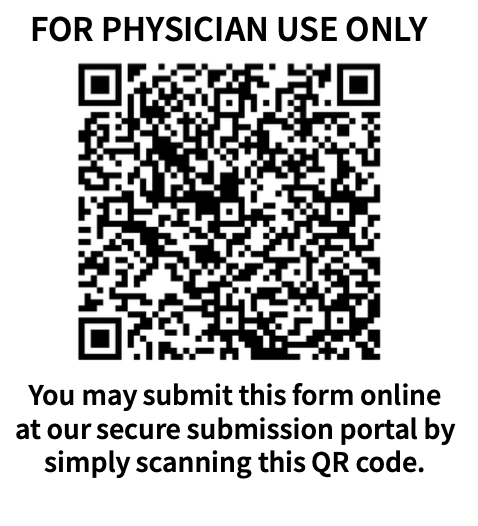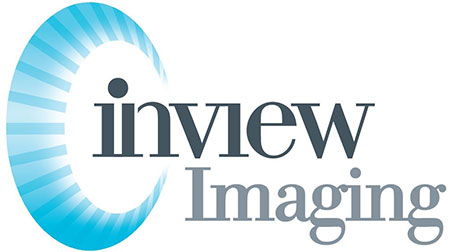Specialty Vascular Ultrasound
Inview Imaging in Partnership with Mint Medical
Together, we offer a variety of diagnostic and screening exams performed by highly trained technologists.
Mint Medical SERVICE GUARANTEE
PATIENT INSTRUCTIONS
Mint Medical provides a multitude of screening and diagnostic exams for all your ultrasound imaging needs.
- 1300 Clay Street Suite 165 Oakland, CA 94602
-
Monday - Friday
6:30 AM - 5:00 PM - 510.823.2211
- 888.480.6615
- Mint Medical services are provided at the Inview Imaging clinic in Oakland.

Peripheral Venous (Venous Reflux and DVT)
If you have been referred for a venous exam, non-invasive ultrasound will be used to evaluate blood flow in your legs or arms or both. Veins return deoxygenated blood to the heart. There are two main sets of veins in the legs: deep veins which lie deep under the skin, and superficial veins which are closer to the surface. Deep Vein Thrombosis (DVT) refers to the development of a blood clot in the deep veins, which can cause partial or total blockage of blood flow in these vessels. Pain, swelling or redness in the limb may result. Unlike superficial thrombophlebitis (a blood clot in the superficial veins), DVT is of more serious concern since the blood clot could break off and travel to the lungs. This is called pulmonary embolism. The risk of pulmonary embolism is reduced by prompt recognition and treatment of DVT. During a venous evaluation the technologist will pass a risk-free, painless non-invasive ultrasound transducer (probe or wand) over your limb(s) to examine blood flow within the veins. Learn more here.
INDICATIONS
- Limb pain or swelling. Suspected pulmonary embolism (shortness of breath, chest pain)
- Thickening of skin or Cellulitis
- Symptoms of varicose veins
- Venous ulceration
- Vein mapping
- Pre-op dialysis access mapping
- Post-ablation monitoring
PATIENT PREPARATION
No patient preparation is needed; however restrictive undergarments should not be worn.
Carotid/Extracranial Arterial Duplex
An extracranial duplex exam uses risk-free, painless non-invasive ultrasound to examine the vessels responsible for blood flow to the brain. As blood leaves the heart via the aorta, it circulates up through the carotid and vertebral arteries on each side of the neck and then on up to the brain. The technologist will pass a transducer (probe or wand) over your neck to look at your subclavian, vertebral, internal and external carotid arteries to detect and measure narrowing. Narrowing is usually caused by a build-up of cholesterol or fatty material referred to as atherosclerosis. When present, atherosclerosis can increase an individual’s risk for stroke. Learn more here.
INDICATIONS
- To assess for risk of stroke or TIA (transient ischemic attack)
- To noninvasively screen for carotid artery disease and atherosclerosis (in the presence of risk factors: high blood pressure, diabetes, tobacco use, increased lipid markers, etc.)
- To diagnose the cause of known neurologic events like TIA or stroke
- Monitoring (surveillance) of known carotid artery stenosis
PATIENT PREPARATION
Try to avoid wearing high collar tops like turtleneck garments to the exam.
Aortoiliac Duplex and Abdominal Aortic Aneurysm (AAA) Screening
The aorta is the largest artery in your body that carries blood from the heart to the head, fingers, and toes and everything in between. The Aorta divides into the right and left common iliac arteries at the level of the belly button, each artery supplying the right and left leg. An abdominal aortic aneurysm (AAA) is an enlargement of the aorta in the abdomen caused by arterial wall weakness usually from atherosclerosis (fatty deposits that cause thickening and hardening of the arteries). Sometimes instead of weakening and enlargement of the aorta or iliac arteries, the aorta and iliac arteries can become narrowed decreasing the amount of blood that can be sent to the legs. To check your Aorta and Iliac arteries for these conditions the technologist will pass a risk-free, painless non-invasive ultrasound transducer (probe or wand) over your upper and lower abdomen to evaluate the size of the Aorta and Iliac arteries and the quality and direction of flow in these important blood vessels. Learn more here.
INDICATIONS
- Abdominal Aortic Aneurysm (AAA) screening
- Aortic bypass graft monitoring or endograft or stent evaluation
- Suspected peripheral arterial disease (PAD), characterized by aching/discomfort legs or feet
PATIENT PREPARATION
Patients should fast for 6-8 hours prior to their exam. However, patients should take current medications as usual with a small sip of water.
Physiologic Arterial Exams (ABI/TBI)
If you have been referred for a Lower or Upper Extremity Physiologic Arterial evaluation, this exam will be used to assess blood flow through the arteries of your legs or arms. An arterial evaluation of the legs begins with blood pressure measurements in the arms and the ankles. Sometimes multiple blood pressure cuffs are placed to measure arterial blood pressures and flow along an entire limb, for example from the groin to the ankle. Based on a calculation from these measurements, the technologist may then perform a peripheral arterial duplex ultrasound exam or instead, may have you walk on a treadmill and repeat the cuff measurements. Learn more here.
INDICATIONS
- Lower Extremities
- Suspected arterial insufficiency (leg pain, claudication (effort fatigue), non-healing or slow-healing wounds)
- Pre- and post-surgical evaluation
- Upper Extremities
- Suspected arterial insufficiency (arm pain, effort fatigue, or weakness)
- Pre- and post-surgical evaluation
PATIENT PREPARATION
No patient preparation is needed.
Peripheral Arterial Duplex
Peripheral arteries are the blood vessels that provide oxygenated blood to the legs and arms. The most common cause of Peripheral Arterial Disease (PAD) is atherosclerosis, where cholesterol and fatty material build up in the walls of the arteries forming what is referred to as plaque. Eventually, plaque can result in loss of flexibility and narrowing of the artery, reducing or completely obstructing the flow of blood. If you have been referred for a Lower or Upper Extremity Peripheral Arterial Duplex evaluation, the technologist will pass a risk-free, painless non-invasive ultrasound transducer (probe or wand) over your limbs to evaluate your arterial circulation both by generating pictures of the arteries and by listening to and visualizing the actual flow of blood. This exam may be combined with a physiologic exam before and after exercise. Learn more here.
INDICATIONS
- Post-procedure surveillance
- Claudication, resting foot pain, or gangrene
- Possible arterial ulceration
- Cyanosis
- Numbness or tingling of skin or weak pulse in limbs
PATIENT PREPARATION
No patient preparation is needed.
Dialysis Access Planning or Surveillance Evaluation
Patients who need dialysis commonly have a graft or fistula surgically placed in either arm or leg that provides access for kidney dialysis. This access allows large amounts of blood to be removed and returned three times per week so that the dialysis machine (artificial kidney) can remove harmful substances from the blood. During the mapping evaluation done for your surgeon, the technologist will pass a risk-free, painless non-invasive ultrasound transducer (probe or wand) along the limb in which the graft or fistula is planned to evaluate the quality of the blood flow and the size of the veins in the limb. For access surveillance, a similar exam is performed on an existing graft or fistula looking for narrowed areas that may cause the access to work poorly or fail completely. Learn more here.
INDICATIONS
- Pre-op planning exam for AV fistula/graft
- AV fistula/graft routine surveillance
- AV fistula/graft surveillance for problems including:
- Difficulty with needle placement
- Increased dialysis time
- Pain, swelling, or discoloration of the limb or digits (fingers/toes)
- Loss of pulse in the graft
- Palpable mass in the graft or limb
- Abnormal lab values
- Increased venous pressure during dialysis
Renal
A renal vascular evaluation examines blood flow within the kidneys and renal arteries (arteries that supply blood to the kidneys). Renal artery stenosis (a narrowing or blockage of the renal artery) can contribute to hypertension (high blood pressure) and may be a major factor in the development of renal failure. To complete the exam, a technologist will pass a risk-free, painless non-invasive ultrasound transducer (probe or wand) over your abdomen and flank to image the kidney to evaluate the quantity and quality of the blood flow. Learn more here.
INDICATIONS
- Suspected Nutcracker Syndrome (blood in urine or pelvic/abdominal pain)
- Evaluation for kidney transplant
- Hypertension
- Increased creatine
- Renal artery stenosis follow-up
PATIENT PREPARATION
Patients should fast for 6-8 hours prior to their exam. However, patients should take current medications as usual with a small sip of water.
Mesenteric Duplex
A Mesenteric Duplex Study examines blood flow in the arteries that carry oxygen-rich blood to the stomach, intestines, pancreas, spleen, and organs that reside in the abdomen. A mesenteric artery stenosis (a narrowing or blockage of the mesenteric artery) can contribute to mesenteric ischemia, a potentially very serious condition. During the ultrasound scan the technologist will pass a risk-free, painless non-invasive ultrasound transducer (probe or wand) over your upper abdomen to evaluate the quality and direction of flow in the superior and inferior mesenteric arteries. Other arteries routinely examined include the abdominal aorta, celiac, hepatic and splenic arteries.
INDICATIONS
- Abdominal pain when eating
- Unexplained weight loss or fear of food
- Diarrhea or abdominal bruit
- Monitoring of mesenteric, celiac, or splenic arteries
PATIENT PREPARATION
Patients should fast for 6-8 hours prior to their exam. However, patients should take current medications as usual with a small sip of water.
Iliac Vein Duplex
The Iliac Veins residing in the lower abdomen and pelvis return deoxygenated blood from the lower abdomen and legs back to the lungs and heart. To evaluate these veins for blood clots or other abnormal areas of narrowing the technologist will pass a risk-free, painless non-invasive ultrasound transducer (probe or wand) over your lower abdomen and groins to evaluate the size of the iliac veins and to assess the quality and quantity of blood flow within.
INDICATIONS
- Evaluation for May-Thurner syndrome (compression of iliac veins)
- Suspected deep vein thrombosis or DVT (blood clots in the legs), leg swelling or pain
- Chronic pelvic pain
- Placement or monitoring of venous stents
PATIENT PREPARATION
Patients should fast for 6-8 hours prior to their exam. However, patients should take current medications as usual with a small sip of water.
Inferior Vena Cava Duplex
The inferior vena cava (IVC) residing in the abdomen is the largest blood vessel in the body and is formed by the joining of the left and right iliac veins that return deoxygenated blood back to the heart and lungs. To evaluate the IVC for blood clots or other abnormalities, the technologist will pass a risk-free, painless non-invasive ultrasound transducer (probe or wand) over your upper and lower abdomen to evaluate the size of the IVC and assess the blood flow within. Learn more here.
INDICATIONS
- Risk of blood clots (deep vein thrombosis, pulmonary embolism, etc.)
- Evaluation of venous insufficiency or varicose veins
- Monitoring of venous stents
PATIENT PREPARATION
Patients should fast for 6-8 hours prior to their exam. However, patients should take current medications as usual with a small sip of water.
Thoracic Outlet Syndrome
Thoracic Outlet Syndrome (TOS) is caused by pressure (squeezing) on the nerves and blood vessels supplying the arms as they travel through the small space at the base of the neck called the thoracic outlet. During a TOS Evaluation the technologist will place a risk-free, painless non-invasive ultrasound transducer (probe or wand) at various spots along the arms to evaluate the quality of blood flow. You will then be asked to move your arms in various ways to see whether a significant change in blood flow occurs with these maneuvers. Your arm symptoms will also be recorded during each portion of the exam.
INDICATIONS
- Pain, numbness, tingling and/or weakness in upper extremities
- Reduced arm movement or reduced ability to reach overhead
PATIENT PREPARATION
No patient preparation is needed.
Liver
A Hepato-Portal or Liver exam examines blood flow in the arteries carrying oxygen rich blood to and from the liver. The test is used to assess the quality and direction of blood flow to assist in diagnosis of portal hypertension and identify possible portal vein and/or hepatic vein thrombosis (blood clots). During the examination, the technologist will pass a risk-free, painless non-invasive ultrasound transducer (probe or wand) over your upper abdomen to examine the blood flow in the vessels in and around the liver and spleen. Other arteries routinely examined include the abdominal aorta and the splenic arteries.
INDICATIONS
- Suspected portal hypertension
- Abdominal pain or distention
- Suspected Cruveilhier-Baumgarten or Budd-Chiari syndrome
- Evaluation for transjugular intrahepatic portosystemic shunting (TIPS)
PATIENT PREPARATION
Patients should fast for 6-8 hours prior to their exam. However, patients should take current medications as usual with a small sip of water.
Temporal Artery Duplex
Temporal Arteritis or Giant Cell Arteritis is a kind of vasculitis or inflammation of the blood vessels that can lead to swelling of the artery wall and narrowing of the flow lumen restricting the amount of blood that can be delivered. The most common symptom of Temporal Arteritis is throbbing headache, but other symptoms can occur. To help diagnose this treatable condition the technologist will pass a risk-free, painless non-invasive ultrasound transducer (probe or wand) over both sides of your forehead, face, and jaw, often also including your mid neck and upper inner arms to evaluate the artery wall and blood flow within the vessels in these areas. Learn more here.
INDICATIONS
- Potential temporal arteritis (inflammation of temporal arteries)
Pseudoaneurysm Evaluation Upper/Lower Extremity
False aneurysms, also known as pseudoaneurysms, are abnormal outpouchings or enlargements of arteries which can occur as a result of trauma or infection, usually in the groin or an arm or leg often at a site of prior surgery or radiology procedure. To evaluate and often treat this condition, the technologist will pass a risk-free, painless non-invasive ultrasound transducer (probe or wand) over the affected area to look for a false aneurysm and if present, measure its size and the blood flow within.
INDICATIONS
- Suspected damage to arterial wall/arterial injury (signs of bleeding, pulsatile mass, abdominal pain)
PATIENT PREPARATION
No patient preparation is needed.
Raynaud’s Evaluation
Raynaud’s Syndrome and Disease is a disorder that affects small blood vessels in your fingers and toes that can cause episodic spasms or vasospastic attacks in response to cold temperatures and stress. During these Raynaud’s attacks small blood vessels tighten causing the skin in the affected areas to turn white and then blue from lack of oxygen. As the attack subsides the skin may turn red and feel tingly. During a Raynaud’s Evaluation, the technologist will take your blood pressure at various places along your affected extremity and then pass a risk-free, painless non-invasive ultrasound transducer (probe or wand) over several places along the limb(s) to evaluate the quality of blood flow. Infrared sensors might also be placed on the fingers/toes of interest to further evaluate the blood flow at the skin surface. This will all be done with the hands/feet at room temperature and then again while submerged in ice water to observe the response to cold temperature exposure.
INDICATIONS
- Suspected Raynaud’s Syndrome (numbness/coldness in the fingers or toes)
PATIENT PREPARATION
No patient preparation is needed.


